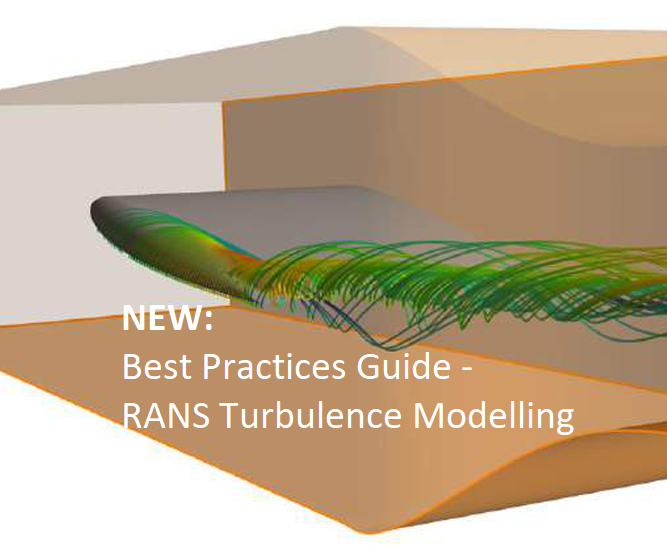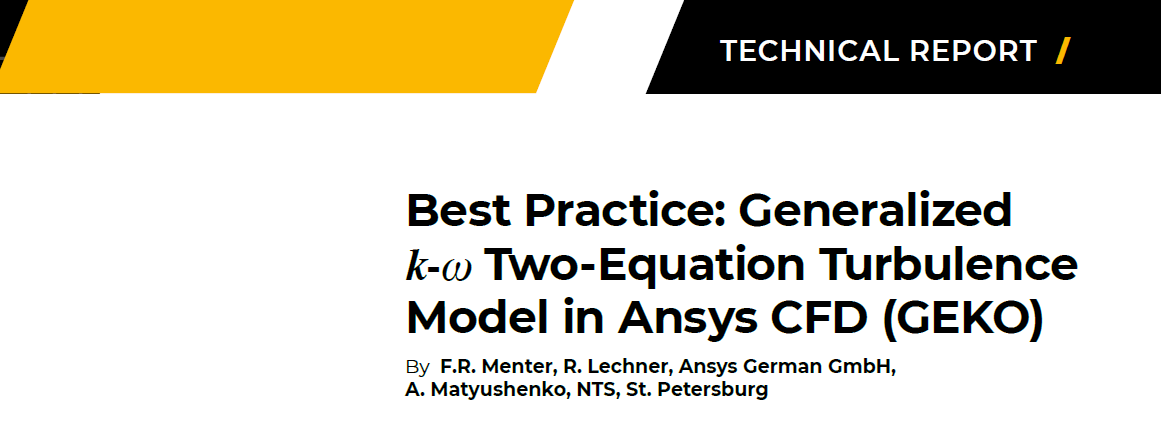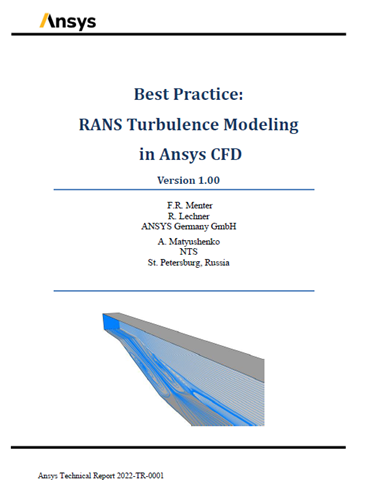Best Practice Guide for RANS Modelling from Florian Menter is Now Available
By Prof. David Fletcher, Senior CFD Specialist, LEAP Australia and Adjunct Professor, University of Sydney.
Virtually all real-world flows are turbulent, so the treatment of turbulence is of crucial importance to those of us running CFD simulations. Whilst real turbulence is always transient and three dimensional, it is not yet practical to adopt Large Eddy Simulation (LES) or Scale Resolving Simulation (SRS) approaches for most industrial applications, other than when such transient approaches are essential - for example, when investigating noise generation or flow-induced structural vibration. RANS is the acronym for Reynolds-Averaged Navier Stokes, a more computationally efficient technique by which the Navier Stokes equation are time-averaged (using a “suitable” averaging period) or ensemble-averaged to “model” the effects of turbulence. This process results in extra terms, the so-called Reynolds stresses, that are introduced into the equations and must be modelled. Most RANS models do this by solving extra equations for the turbulence kinetic energy, κ and either the turbulence energy dissipation rate, ε, or the turbulence frequency, ω.
There are a vast number of such models with a variety of forms, boundary treatments and additional terms to represent a particular physical effect. To the untrained, opening the Viscous panel in the Fluent GUI can be akin to opening Pandora’s Box! So how can a CFD engineer make the correct informed choice for their own simulation?
Previously, Florian Menter and his team produced two very impressive and useful Best Practice guides for Scale Resolving Simulation and the new unified two equation GEKO model (note: link takes you to the White Paper - contact LEAP for access to the GEKO BPG).
The good news is that a third Best Practice Guide has just been released that covers RANS turbulence modelling and fills in all the background to these approaches that really matters. The guide is 90+ pages in length and provides comprehensive coverage of all the well-known One equation, Two equation and Reynolds stress models that are implemented in the ANSYS CFD software packages.
You might ask what more there is to learn beyond the GEKO model that allows a simple constant change to reproduce the behaviour of both the SST and standard κ-ε models. But then you would miss out on all the discussion of the various forms of the models, their strength and weaknesses, and the many options that allow their extension to model complex flows, involving, for example, swirl, buoyancy, stagnation points, corner separation, transition, ….
Then there is the discussion of wall treatments, what meshes are required to resolve the wall boundary layer correctly, how log law conditions should be applied and much more. It also makes it very clear that if you use the two-layer wall function with κ-ε models it is essential that you check on the blending behaviour post simulation to avoid unphysical results.
At the conclusion of this detailed paper, you may well be left realising what a clever strategy the GEKO modelling approach is, and how basing the modelling around the κ and ω equations is a way to have a unified approach that eliminates so many issues. The following diagram shows how so much physics can be integrated into a single RANS approach. Knowing the background on the various RANS models, after reading this document I am even more convinced of the strategy of choosing GEKO as a default, with additional physics corrections, as and where needed, to be the one to follow. Do not take my word: Read this hugely impressive document, and the others too if you have not seen them.

They are a must read for any PhD student or researcher using turbulence modelling as they provide so much background and essential knowledge. You will then feel comfortable with the modelling choice you make and be able to defend the choices you make. They also provide you with a comprehensive set of modelling checks and validation cases that are immensely useful.
If you are an industrial user or consultant then arguably it is even more important that you read and refer to these to show your choices of turbulence model are soundly based and you have made defendable choices that have been used correctly.
Finally, if you have not had the benefit of 40 years of CFD simulation (something only a few of us can claim) then it is a terrific way to catch up with all the history you missed, and helps avoid you learning the lessons the hard way!
If you have any remaining questions after reading the guide, customers in Australia and New Zealand are encouraged to contact LEAP’s CFD team for any help you require to implement the right turbulence model for your upcoming project – speak to your local CFD team via https://www.leapaust.com.au/cfd/









